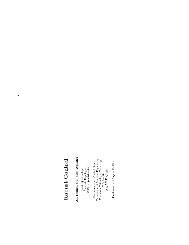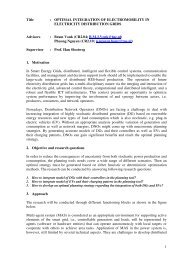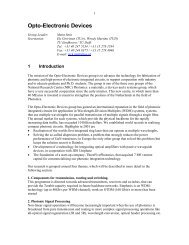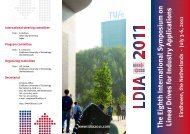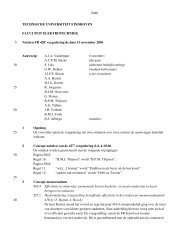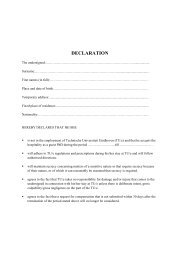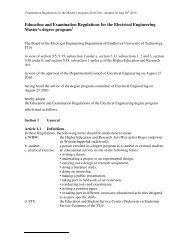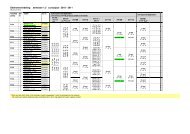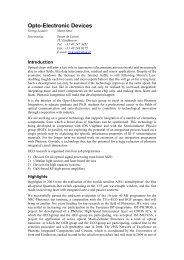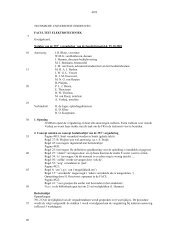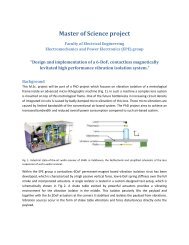Linear Matrix Inequalities in Control
Linear Matrix Inequalities in Control
Linear Matrix Inequalities in Control
You also want an ePaper? Increase the reach of your titles
YUMPU automatically turns print PDFs into web optimized ePapers that Google loves.
Trusses<br />
Trusses consist of straight members (‘bars’) connected at jo<strong>in</strong>ts.<br />
One dist<strong>in</strong>guishes free and fixed jo<strong>in</strong>ts.<br />
Connections at the jo<strong>in</strong>ts can rotate.<br />
The loads (or the weights) are assumed to be applied at the free<br />
jo<strong>in</strong>ts.<br />
This implies that all <strong>in</strong>ternal forces are directed along the members,<br />
(so no bend<strong>in</strong>g forces occur).<br />
Construction reacts based on pr<strong>in</strong>ciple of statics: the sum of the<br />
forces <strong>in</strong> any direction, or the moments of the forces about any jo<strong>in</strong>t,<br />
are zero.<br />
This results <strong>in</strong> a displacement of the jo<strong>in</strong>ts and a new tension<br />
distribution <strong>in</strong> the truss.<br />
Many applications (roofs, cranes, bridges, space structures, . . . ) !!<br />
Design your own bridge<br />
Siep Weiland and Carsten Scherer (DISC) <strong>L<strong>in</strong>ear</strong> <strong>Matrix</strong> <strong>Inequalities</strong> <strong>in</strong> <strong>Control</strong> Class 1 52 / 59



